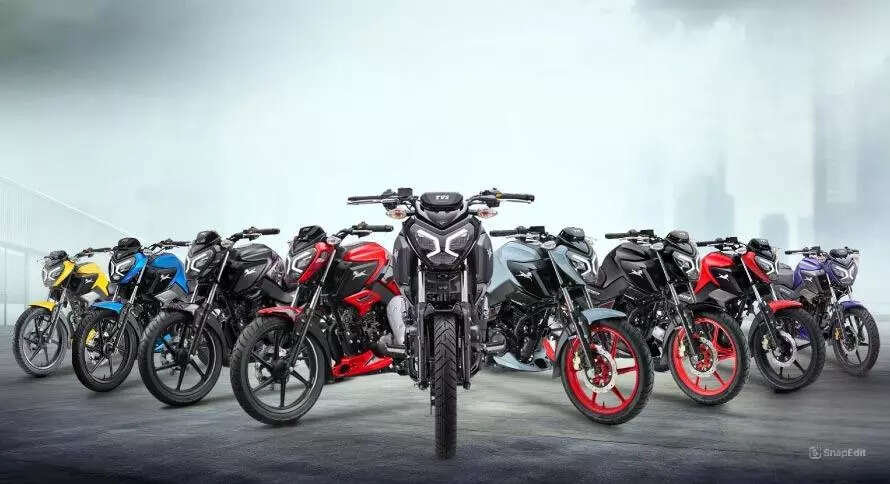[ad_1]

New Delhi: Two- and three-wheeler maker TVS Motor Company is looking to expand its network as some of the company’s electric vehicle (EV) products are in the “final stages” of development even as the launch of these products is strategically timed by the company.
“You will see these products in the coming quarters,” KN Radhakrishnan, CEO of TVS Motor Company said on Monday at the company’s Q4 earnings call.
Even if the products are ready, we ensure they enter the market when they can achieve their full potential. Sometimes, it is a strategic decision to delay the launch to align with market dynamics, he added, while reaffirming that TVS continues to invest in both ICE and EV products.
‘Brilliant’ PLI incentive
TVS is among a few automakers to benefit from the government’s Production Linked Incentive (PLI) scheme. As a result, the company has seen margin improvement, which was reflected in its Q4 FY25 earnings.
Its operating EBITDA margin of 14 per cent in Q4 includes the full-year PLI benefit, covering all previous quarters. For Q4 alone, the EBITDA margin stands at 12.5 per cent, compared to 11.3 per cent in Q4 FY24.
“We look at PLI in totality, which is 0.5 per cent of the total turnover, and it is a brilliant PLI incentive,” the CEO said.
While the incentives apply to sales of the iQube electric scooter, the CEO did not disclose the category of variants currently benefiting from these incentives. “We have to look at the total benefit that the company is accruing. We should not look at which segment and how much,” he said.
The government launched the ₹25,938-crore PLI scheme in 2021 to boost domestic manufacturing of Advanced Automotive Technology (AAT) products and attract investments across the automotive value chain.
Under the scheme, companies receive incentives based on sales growth compared to a base year, provided they meet specific criteria related to domestic value addition and investment levels. Last year, Tata Motors and Mahindra & Mahindra submitted incentive claims under the PLI scheme, which have since been approved by the government.
Going forward, with increased investment and product localisation, Radhakrishnan expects the PLI benefits to continue. Additionally, the company has applied for PLI scheme for its new electric three-wheeler.
Made in India cells
TVS reported revenue from EV sales at ₹3,364 crore for FY25, with EV sales rising 44 per cent to 2.79 lakh units, compared to 1.94 lakh units in FY24.
In Q4 FY25, its EV revenue stood at ₹889 crore, with sales growing 54 per cent to 76,000 units, up from 49,000 units in the same quarter last year.
To boost localisation, TVS plans to produce EV battery cells in India. “Cells will soon be manufactured in India, and we are partnering with several companies in this regard. So, the EV journey is just beginning,” Radhakrishnan said.
Meanwhile, auto electrical parts maker Lucas TVS has recently ventured into EV battery pack manufacturing through its wholly owned subsidiary, TVS Indeon Ltd, and is scaling up production capacity. Currently, Lucas TVS primarily supplies battery packs to TVS Motor.
Domestic two-wheeler market
According to the CEO, the January-March period saw a slowdown in the two-wheeler industry, mainly because last year’s Diwali season had exceptional growth, with rural markets outpacing urban ones for the first time. Additionally, retail financing companies may have capitalised on this growth, and there was some tightening of retail finance in the last quarter.
However, he is confident that these reflections are becoming much more refined this year.
TVS expects domestic market growth in FY26 to mirror last year, despite a potentially soft first quarter. The company anticipates stronger growth in the scooter segment compared to motorcycles.
While April is seeing the base effect from last year, May and June are expected to perform better, aided by a longer marriage season this year, Radhakrishnan said.
A combination of factors—lower repo rate, reduced EMIs, income tax rebates, infrastructure upgrades, a rising replacement cycle, and expectations of a normal monsoon—is likely to boost consumer sentiment.
For FY26, TVS has also allocated a capex of ₹1,800 crore, up from ₹1,100 crore last year. The company reveals that majority of this will be directed towards new product development, technology, R&D, and some capacity enhancements.
On CNG-driven vehicles, Radhakrishnan said, “It is a strong option, but it’s important to consider when, how, and which models to focus on. We are studying this closely, as it’s a critical area of work.”
Good momentum in exports
While TVS acknowledges challenges arising from the current geopolitical situation, it remains optimistic about the strong demand for two-wheelers.
TVS exports to the LATAM region have seen strong growth, with high demand across markets like Mexico, Colombia, and Guatemala. However, there have been some challenges in the Middle East.
“LATAM performed well last year, but the African markets saw mixed momentum, with growth in key countries slowing due to economic challenges, including higher inflation and currency devaluation. While Sri Lanka has shown signs of recovery, Bangladesh continues to face some challenges,” he said.
British iconic bike maker Norton Motorcycles, owned by TVS, is on track to launch new products in global markets by the end of the current financial year.
[ad_2]
Source link





